Why High-End Collectors Are Choosing Prints Over Originals
For as long as most people can remember, the art world has relied on a fairly rigid hierarchy. Originals sat at the top, glowing with an aura of exclusivity. Prints were pushed to the sidelines, labelled as reproductions or, worse, “copies.” Collectors who wanted to be taken seriously knew the rule: you bought the painting no one else could have, and you displayed it as proof of your discernment. Prints were something you picked up as a student, as a decorator, or as a gift for someone who couldn’t quite stretch to “the real thing.”
But markets change, and collectors are often the first to sense those shifts before they hit the mainstream. Over the last decade, the role of prints in high-end collecting has undergone a quiet but decisive transformation. Serious collectors are now choosing prints deliberately, not as a budget compromise, but as a sophisticated response to a world that demands different things from art.
The rise of high-end art prints isn’t about lowering standards. It’s about rethinking what matters. Presence is overtaking scarcity as the defining quality. Private catalogues are replacing public showrooms. Depth is winning over display. And prints, the carefully produced, collector-grade kind, are perfectly positioned to embody this change.
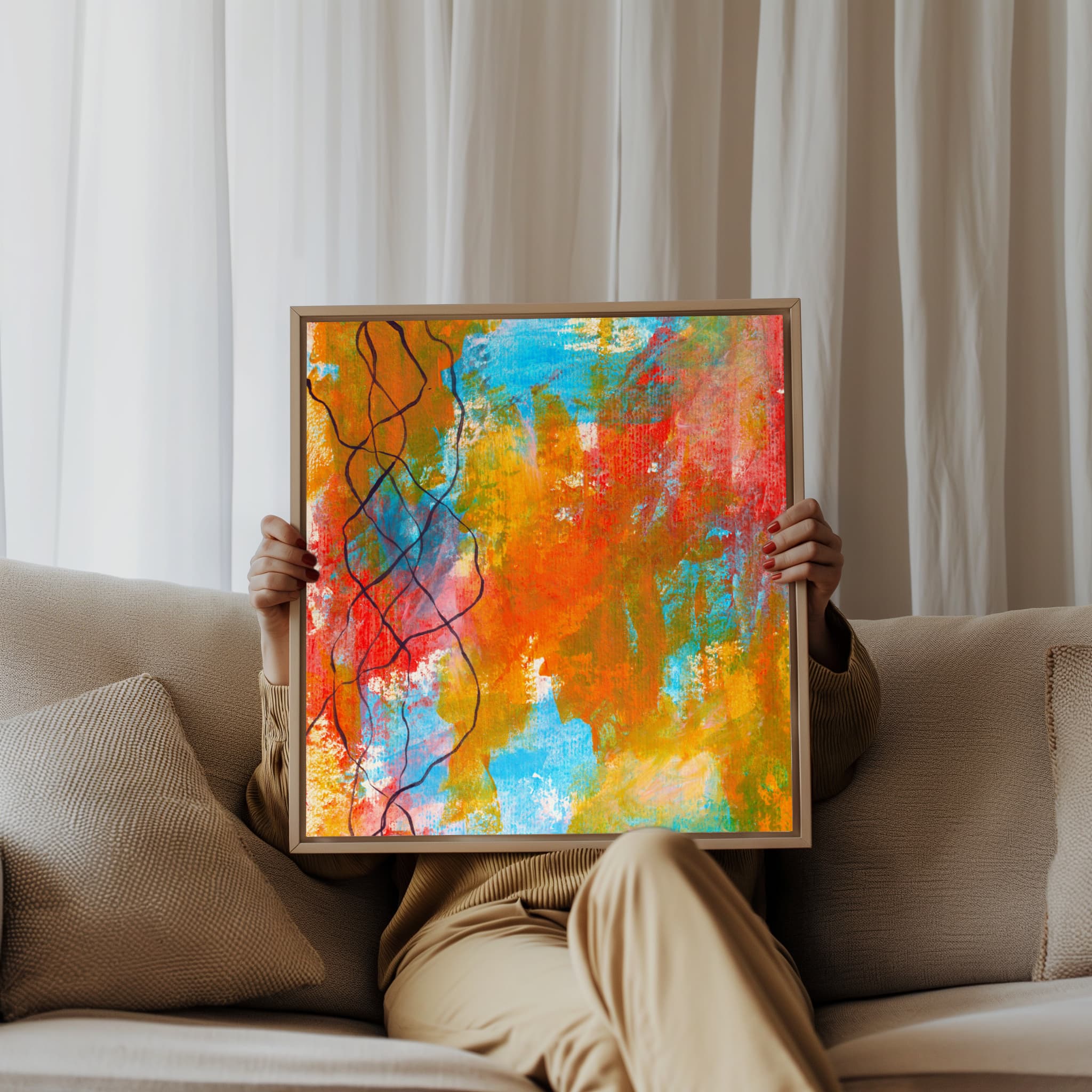
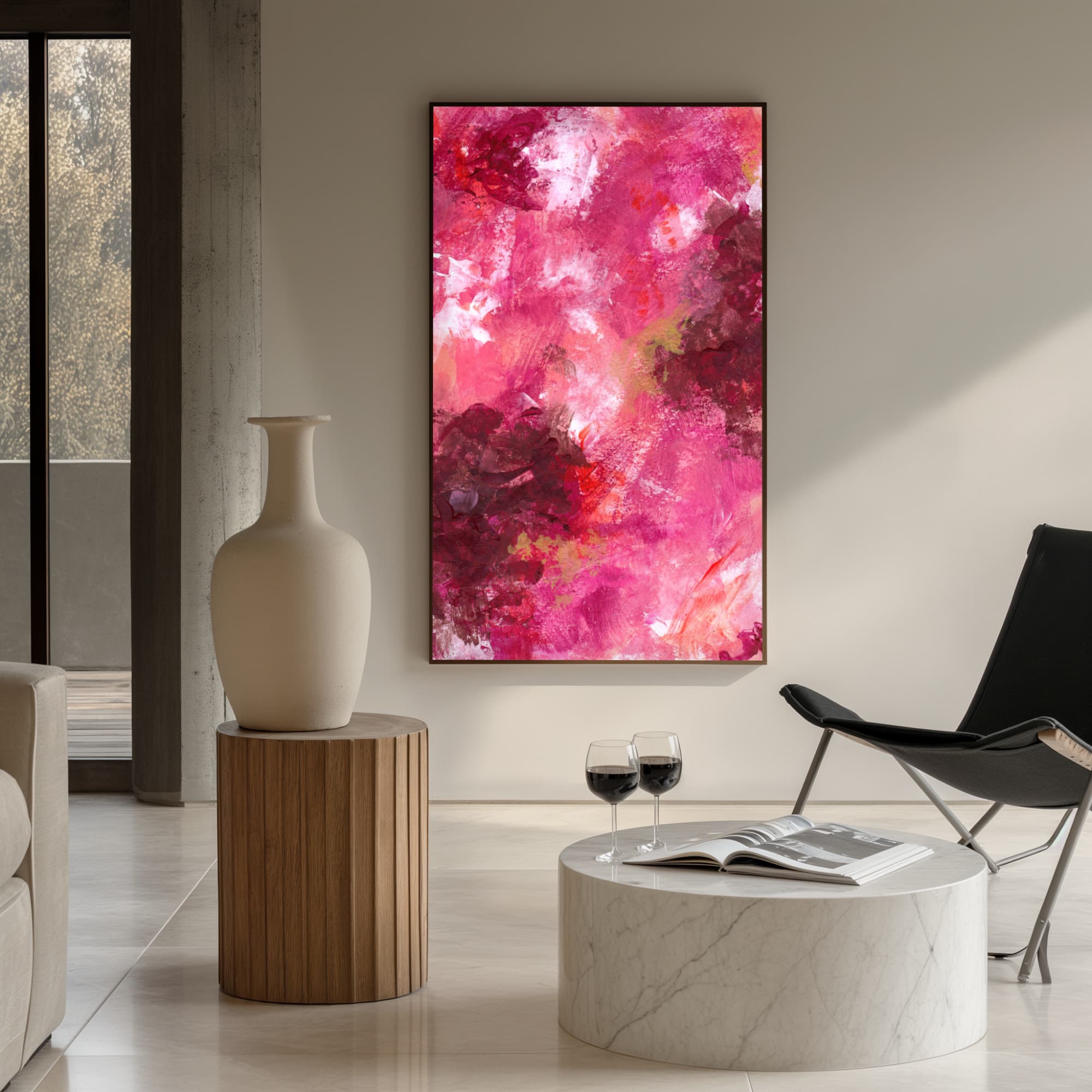
From Scarcity to Resonance
Traditional collecting leaned heavily on scarcity. If something was unique, it was valuable. The logic was simple: there is only one, so you must compete to own it. That scarcity still has its place, but many of today’s most emotionally intelligent collectors are looking for something else entirely. They want works that hold space, that alter how a room feels, that carry presence in a way that doesn’t hinge on whether there is only one copy in the world.
This isn’t to say scarcity has lost its power. But its dominance has been challenged by another form of value: resonance. And resonance is not limited to originals. In fact, when handled with integrity, a print can hold just as much resonance as the painting it originates from, sometimes more, because its very accessibility allows the collector to engage with it without the burden of “protecting” a singular, irreplaceable asset.
Why This Matters Now
Part of the shift comes from cultural changes. Collectors are more private than they once were. Status today is less about showing what you have and more about how you live. A room anchored by a large-scale canvas print chosen with discernment says as much about a person’s taste and intelligence as a painting acquired in an overheated auction room.
It also reflects the growing recognition that luxury is not about quantity or uniqueness alone, but about alignment. A collector doesn’t choose a piece simply because it is rare; they choose it because it resonates with who they are. Prints make that alignment possible in ways that are flexible, elegant, and sustainable.
Moving Beyond the Old Biases
This article exists for two reasons. The first is to address the outdated bias that still lingers around prints. Too many people still equate them with posters rolled up in tubes. The second is to highlight how serious collectors are already moving past those assumptions. When you see what’s happening in the market, from the rise of limited edition print runs to the growth of private catalogues like the Collector’s Vault, it’s clear that prints are not an afterthought. They are central to the way collecting is evolving.
And that’s why it’s worth spending time exploring this subject properly. Because if you’re a collector, designer, or someone thinking about building a collection, understanding why prints are becoming the intelligent choice could shape not only what you buy, but how you think about value itself.
The Old Paradigm: Originals as the Only True Collectibles
For most of the twentieth century, collecting art was a fairly predictable game. You bought an original. That was the rule. Anything else was treated as an accessory, something you might hang in a holiday house or the office corridor. If you wanted to be taken seriously, you didn’t touch prints.
Galleries encouraged this, of course. Their entire system depended on selling single works for escalating prices. The rarer, the better. Auctions added fuel to the fire, spinning headlines about record-breaking canvases while the rest of the market quietly nodded along. The story was simple: an original was important because it couldn’t be duplicated.
Prints, meanwhile, were downgraded to decoration. Even when great artists used printmaking as a deliberate medium, and they always have, from Rembrandt to Hockney, the market treated them like a lesser cousin. Limited editions carried weight only if the artist’s name was already shining bright enough. Otherwise, they were dismissed as something you bought because you couldn’t afford the “real thing.”
Collectors went along with it because it made life simple. Scarcity was easy to measure. One in one is rarer than one in ten. That was enough. And if you owned the one, you could hold your glass of champagne at the gallery opening knowing your piece was untouchable. Social capital wrapped up in stretcher bars.
But this obsession with uniqueness often missed the point. Many of those canvases ended up locked in storage or flipped at the next auction, while the so-called “lesser” works were the ones people actually lived with. Prints became the art that stayed on walls, quietly doing the work of changing a space, while originals became more like currency.
By the early 2000s, cracks had started to show. Younger collectors weren’t convinced by the idea that art was only valuable if you could treat it like a financial instrument. Designers were more interested in how a piece altered the feel of a room than whether it was one-of-one. And artists themselves had little patience for the snobbery, editions became a conscious choice again, not a compromise.
The old paradigm hasn’t completely disappeared. There are still plenty of collectors who won’t look twice at a print. But that mindset belongs more to the spectacle-driven side of the market than to those building intelligent, resonant collections today.

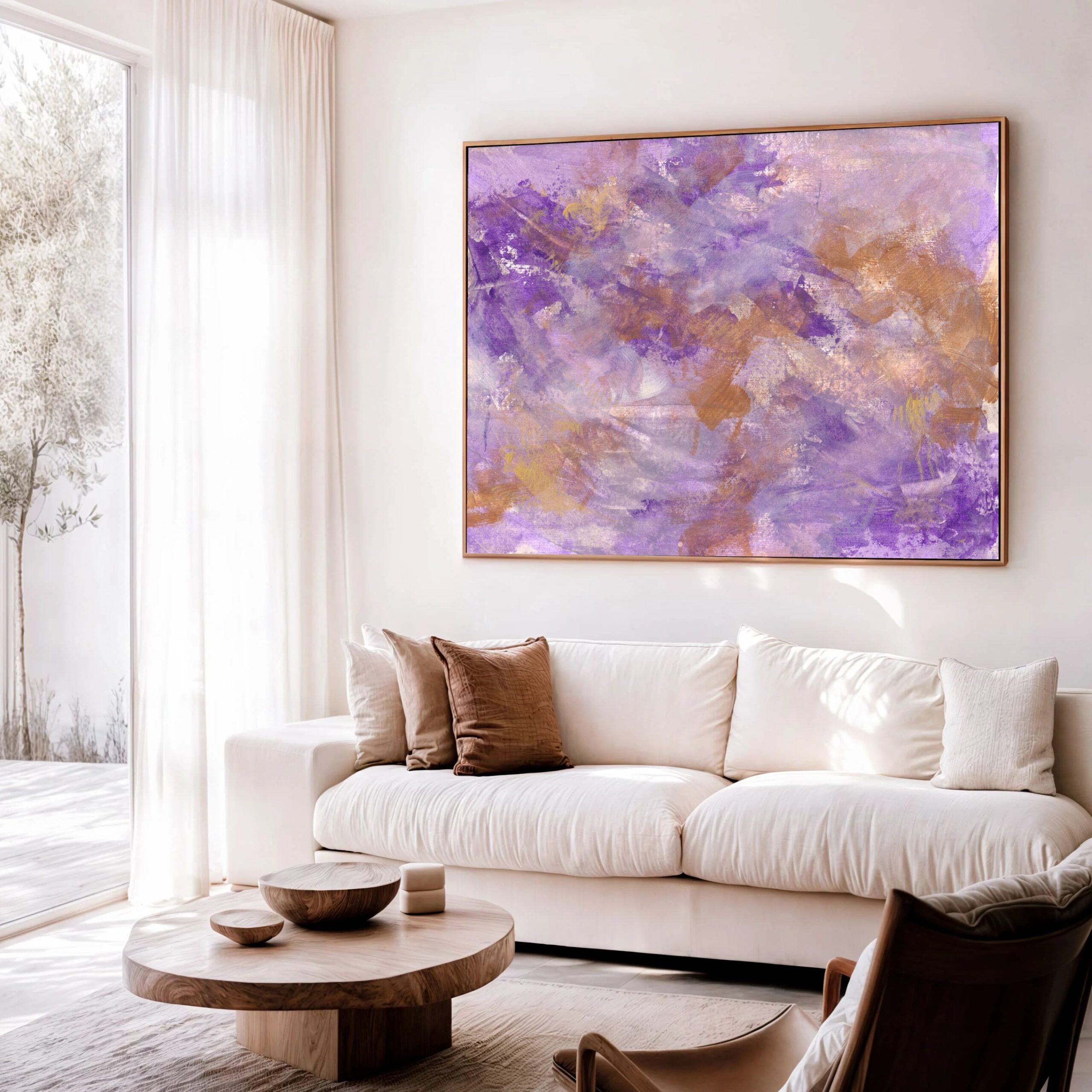
The Rise of Collector-Grade Prints
If the old model was built on originals, the new one is quietly being built on prints, though not the kind most people picture when they hear the word. A lot of people still think “print” means something you order rolled up in a cardboard tube, with colours that fade as quickly as the novelty. That’s not what we’re talking about here.
Collector-grade prints are a different category entirely. These are works produced with the same attention to detail as an original painting. Archival inks. Museum-quality canvas. Professional stretching. Sometimes hand-finished. The result isn’t a cheap reproduction but a presence piece that can hold its own in any serious collection.
Why Prints Stopped Being an Afterthought
For a long time, prints carried a stigma because they were treated as mass-market reproductions. But the standard has shifted. Collectors now understand there’s a gulf between a low-cost decorative poster and a canvas produced with gallery-level integrity. The difference is obvious when you see one in a space. A collector-grade canvas doesn’t apologise for being a print. It sits there with weight.
Artists have helped drive this shift too. More and more are refusing to treat prints as secondary. Instead of releasing them as watered-down versions of “the real thing,” they design them to be stand-alone works. Editions are controlled, formats are intentional, and the integrity of the piece is treated seriously from the outset.
Why Collectors Are Paying Attention
Collectors are pragmatic. They know that art doesn’t live in an abstract world of definitions. It lives on walls, in offices, in homes, in retreats. If a piece changes the atmosphere of a space, it has done its job, regardless of whether it’s labelled as “original” or “print.”
And when the quality is right, there isn’t a perceptual gap. A canvas print produced to museum standards can carry just as much presence as an oil painting, sometimes more, because it isn’t freighted with the anxiety of being a fragile one-off. Collectors don’t have to lock it away in a vault. They can actually live with it.
A Quiet Recalibration of Value
This is the recalibration happening now: prints are no longer seen as the cheap alternative. They are becoming the intelligent alternative. Instead of buying one canvas that might sit in climate-controlled storage, collectors can build a layered, resonant collection of works that remain accessible and alive in their environments.
It doesn’t mean originals are irrelevant. It simply means the binary of “original equals important, print equals decorative” no longer holds up. The market is broadening, and prints are finally being recognised for what they are: serious works in their own right.
What It Actually Feels Like to Be Held Without Expectation
Exclusivity used to be the gold standard in collecting. If you had the only one, you had won. But exclusivity doesn’t guarantee that the piece will hold space, change how a room feels, or resonate on a deeper level. That’s where presence comes in, and presence is what serious collectors are paying attention to now.
Presence Is the Real Luxury
Anyone can chase rarity. It just takes money, access, and a willingness to play the auction game. Presence is different. Presence is when a work alters the atmosphere in a room. When you sit with it and realise it’s doing something you can’t explain. That effect doesn’t hinge on whether it’s one-of-one. A carefully produced print can have as much presence as an original, because presence comes from the work itself, not the legal definition of uniqueness.
The Shift in Collector Priorities
Collectors with emotional intelligence don’t need to prove anything by owning something rare. They want art that lives with them, that brings depth into their spaces. In that context, presence matters more than exclusivity. A work that fills a room with stillness or weight is worth far more to them than an original that spends its life in storage, dragged out only when it needs to be insured or resold.
Privacy Over Performance
Exclusivity is performative. It’s about showing that you have something no one else can touch. Presence is private. It’s about what the piece does for you when no one else is looking. That shift from performance to privacy mirrors changes across luxury culture more broadly. True collectors don’t need to prove anything. They already know who they are.
Why Prints Fit This Model
High-end prints excel here because they allow collectors to focus on presence without worrying about fragility or irreplaceability. They can commission scale. They can place the work where it will be lived with. They don’t have to compromise between owning a serious piece and being able to actually enjoy it.
This is why, when you look closely, the old obsession with exclusivity feels shallow compared to the weight of presence. Collectors are beginning to realise that the real luxury isn’t in owning something no one else can have. It’s in living with something that actually changes how you feel.
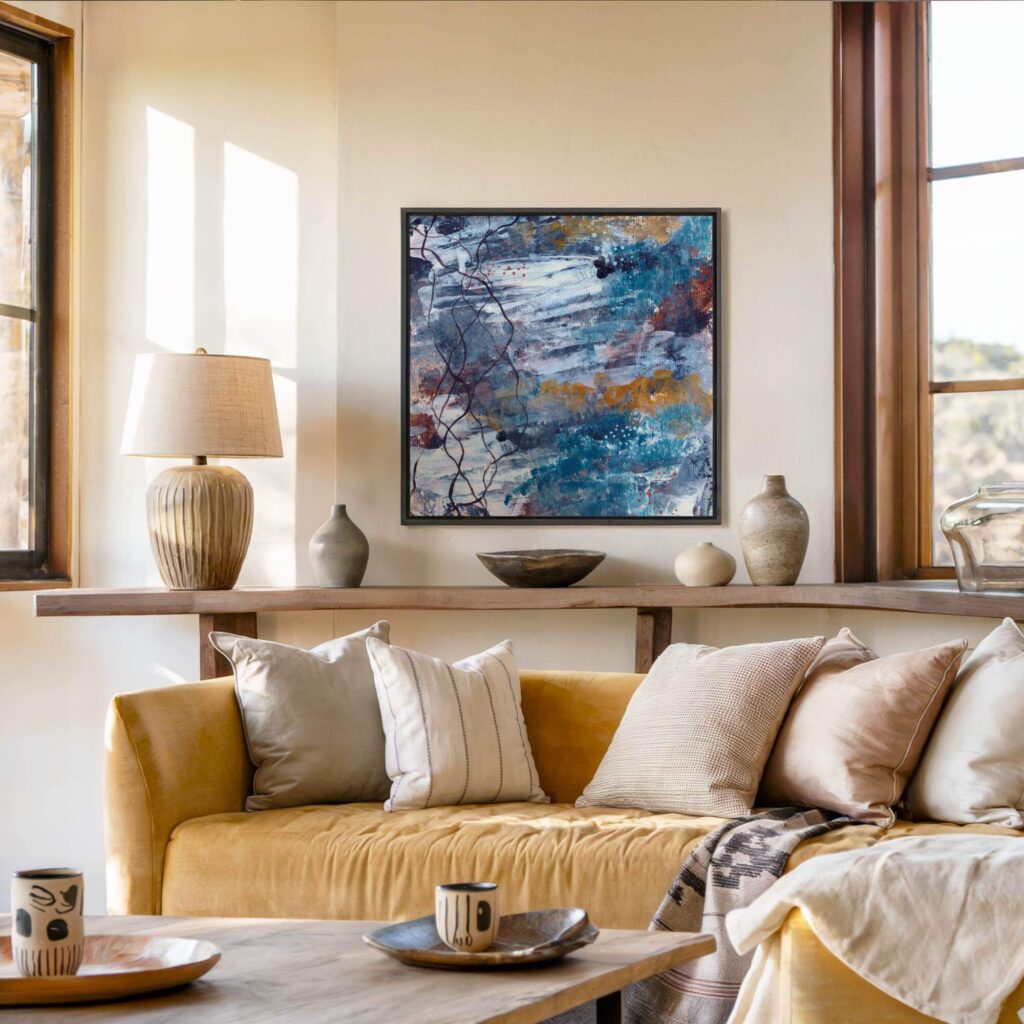

Prints as a Smart Investment
The idea that prints can’t hold financial value has been repeated so often it became a cliché. But clichés rarely survive contact with reality, and the reality is that serious prints have always been collected, traded, and valued, the market just framed them differently. What’s changing now is that collectors are openly recognising prints as intelligent investments in their own right.
Controlled Editioning Matters
One of the reasons collector-grade prints hold value is because they are not churned out endlessly. Editions are controlled, intentional, and tied to specific bodies of work. When a series is set at ten or twenty, it stays there. This discipline protects scarcity without leaning on artificial hype. Legacy Thread, for instance, exists in only thirteen pieces, ten A2s and three A1s, and that’s the boundary. Collectors know exactly what they’re entering into.
Diversification Instead of a Single Bet
Buying one original can feel like placing a bet on a single number at the roulette table. Prints allow collectors to diversify. Instead of sinking capital into a single painting that might or might not hold its market value, they can assemble a portfolio of works across themes, scales, and contexts. That doesn’t just spread risk. It also creates a richer collection to actually live with.
Durability and Longevity
There’s also the matter of materials. Archival-quality canvas prints can last for generations if treated correctly. Pigment-based inks resist fading. Canvas retains its strength over the decades. This longevity means collectors can pass down works as part of a legacy without worrying that they’ll disintegrate or need restoration. In this sense, prints behave like originals, often with fewer headaches.
The Resale Question
While most collectors who buy my work don’t do it to flip it at auction, it’s worth pointing out that resale markets for high-end prints are growing. Limited editions by established artists regularly climb in value. The principle is simple: scarcity plus demand equals appreciation. Serious prints are no longer dismissed as “worthless once bought.” They circulate, and their circulation reinforces their cultural weight.
Investment in Resonance
But perhaps the most intelligent part of this investment is less financial. Prints allow collectors to invest in resonance, in having more than one piece of work that supports their daily environment. The return here isn’t just measured in future resale potential. It’s measured in the quality of the spaces they live and work in now. And in that sense, prints are one of the smartest investments a collector can make.
Why Slowness Builds Real Trust
The art world has spent far too long pretending that originals and prints sit on opposite ends of a hierarchy, as if collectors must pledge allegiance to one camp or the other. It’s a false binary. The reality is that both play different roles in a collection, and intelligent collectors are beginning to treat them as complementary rather than competing.
Different Roles, Same Collection
An original commission, such as a Soul on Canvas piece, is intimate by design. It captures something deeply personal, anchored in a specific reflection or emotional need. That kind of work belongs in a collector’s life, not because it’s unique on paper, but because it is unique to them.
Prints, by contrast, allow a collector to expand the conversation. A canvas from the Collector’s Vault carries the presence of a work from my archive, produced at a scale and quality that makes it possible to live with. It doesn’t replace the original; it sits alongside it, filling out a collection in ways a single canvas never could.
The Problem with Absolutism
Insisting on “originals only” is a kind of absolutism, and it doesn’t hold up well under scrutiny. The same collectors who swear they’ll only buy originals often end up buying editioned photography, signed prints, or even hand-embellished canvases. They recognise value when they see it; they just don’t always admit it fits outside the old definitions.
How Designers Think About It
Interior designers have long understood what many collectors are now catching up to: prints and originals are tools. Sometimes a space calls for a large-scale work that creates balance across a room. Sometimes it calls for something more intimate and singular. The point isn’t to declare one “better.” It’s to understand which medium serves the purpose best.
Collectors Who Refuse the Divide
The most interesting collectors I’ve worked with are the ones who don’t care about this distinction. They’ll commission something deeply personal and then also request access to the Vault. They don’t see a contradiction. They see breadth. Their collections carry both intimacy and resonance, both presence and variety.
Why the Binary Persists
The binary persists mostly because it’s useful for marketing. Galleries need to sell the idea that originals are superior because it justifies the price tags. But once collectors step outside that framework and actually live with the work, the boundary feels artificial.
Originals and prints aren’t enemies. They’re simply different forms of the same practice. Treating them as if they’re locked in competition only limits what a collection can become.


The Role of Technology in Quality
One of the biggest reasons collectors are taking prints seriously now is that the technology has caught up. For a long time, the gap between an original and a print was obvious. Colours looked flat, textures disappeared, and the whole thing gave itself away at a glance. That isn’t the case anymore.
From Reproduction to Presence
Advances in high-resolution capture and pigment-based inks mean prints can now hold depth that used to be exclusive to originals. Every layer, every shift in tone, can be carried over with clarity. Add to that museum-grade canvas and professional stretching, and you have a piece that doesn’t read as “copy.” It reads as a presence.
The Myth of the “Eye Test”
There’s still a myth that you can always tell a print from an original. Sometimes that’s true; if you press your nose to the surface, you’ll notice differences in texture. But in a space, at scale, the difference isn’t obvious. I’ve seen people stand in front of a collector-grade canvas and assume it was the original. The eye test isn’t as reliable as some would like to believe.
Why This Benefits Collectors
For collectors, this matters because it levels the playing field. They no longer have to compromise on quality when choosing a print. They can commission pieces at scale without losing presence. It opens up new possibilities for how art can live in a home, office, or retreat.
Not About Imitation
It’s also worth pointing out that this isn’t about pretending a print is an original. The point isn’t to fake it. The point is to make something that stands on its own terms, with its own weight. The technology is simply the tool that makes that possible.
Where It’s Going Next
We’re only going to see this improve. As technology advances further, the line between original and print will become even less relevant. Collectors who already understand this are ahead of the curve. They’re not waiting for the market to give them permission. They’re already building collections that prioritise presence over categories.
Cultural Shifts: Privacy, Stillness, and Depth
Collecting always reflects its time. In the 80s, it was about spectacle, the bigger, shinier, and more public, the better. In the 2000s, it was about treating art like a stock portfolio. And now? The pendulum has swung again. The collectors I respect most aren’t chasing headlines or Instagram likes. They’re looking for something far quieter.
Privacy Instead of Performance
A lot of old-school collecting was performative. Buy the one-of-one canvas, hang it where the right people can see it, and make sure the gallery mentions your name in the press release. That model feels outdated now. Today, privacy carries more weight than spectacle. The most intelligent buyers I know don’t want their collections plastered across glossy spreads. They want to live with the work, not parade it. That’s why the Collector’s Vault is private. It’s built for people who value discretion.
The Pull Toward Stillness
Stillness is underrated. Walk into a space that has it, and you feel it immediately. The right piece of art doesn’t just decorate; it shifts the entire atmosphere. Originals can do this, of course, but prints allow collectors to bring that same weight into more than one room. Instead of one canvas locked away like a museum piece, you get presence that lives with you every day.
Depth Over Novelty
Another shift is happening too. Novelty is exhausting. Chasing the “next big thing” is a young collector’s game, and most grow out of it. Serious collectors aren’t looking for what’s fashionable this month. They want depth, work that doesn’t unravel after five minutes of looking. Prints support that because they allow continuity. You can build a collection that reflects the full arc of an artist’s practice rather than gambling on one isolated piece.
Why Prints Fit This Moment
The reason prints fit the mood of now is simple: they don’t need to shout. They aren’t built for hype cycles or auction-room theatre. They’re built to be lived with. And that aligns with the way high-end collectors increasingly want to live, privately, intelligently, with spaces that hold their own depth.

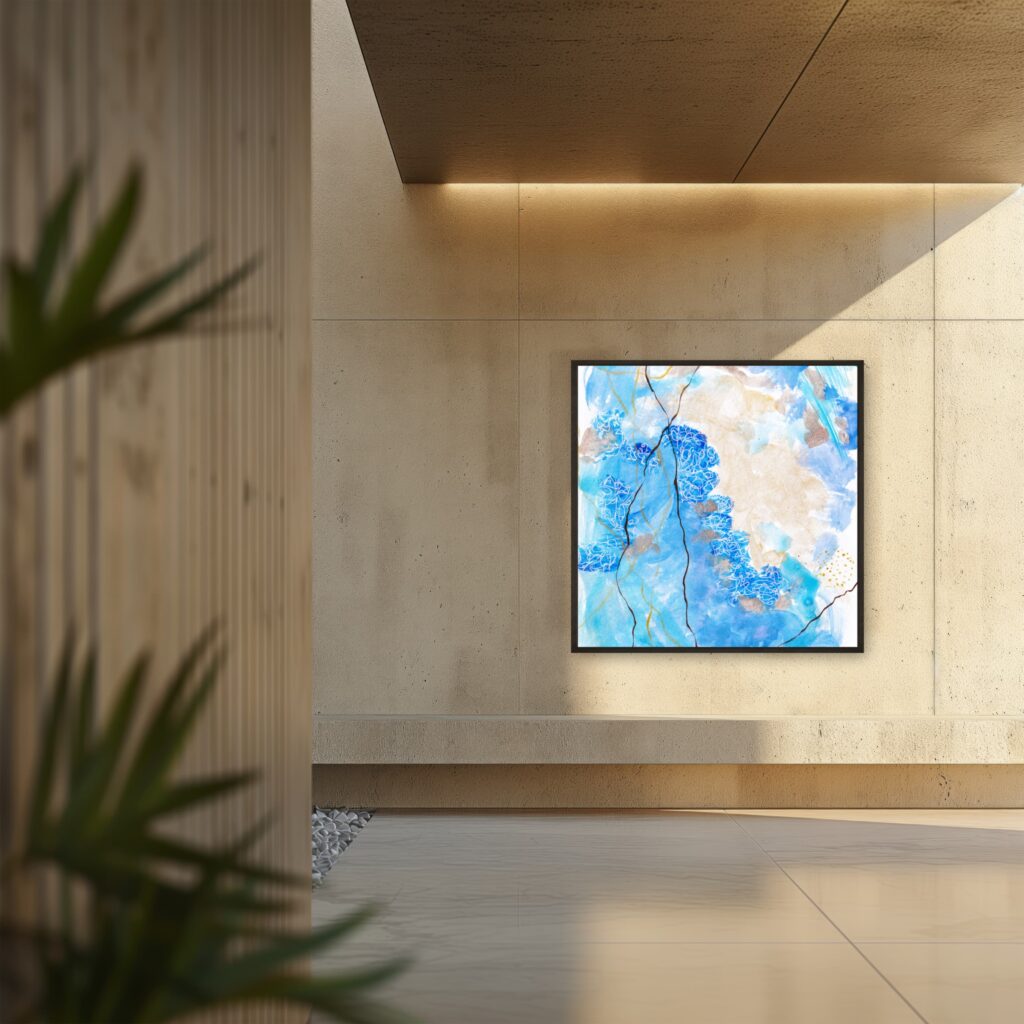
Why Prints Work in Luxury Interiors
If there’s one thing collectors and designers agree on, it’s that art has to work in the space it occupies. It’s not enough for a piece to be impressive on paper; it has to hold its weight once it’s actually on a wall. That’s where prints prove themselves over and over again.
Scale Without Compromise
Large-scale originals are rare, expensive, and often fragile. But a collector-grade print can be produced at a size that anchors a room without losing presence. You don’t have to settle for something small just because it’s technically “unique.” A two-metre canvas print can dominate a living room, a boardroom, or a retreat space, while still holding the same kind of atmosphere you’d expect from an original.
Cohesion Across a Space
Designing an interior isn’t about hanging one showpiece and leaving the rest of the walls bare. It’s about balance. Prints allow collectors and designers to carry a visual language across multiple rooms without diluting quality. One piece in a study, another in a dining room, both drawn from the same archive, this creates cohesion, a thread that ties the environment together.
Practical Intelligence
Luxury interiors are also about practical intelligence. Nobody wants to tiptoe around a fragile one-off painting in a space that actually gets used. Prints remove that anxiety. They’re durable, resilient, and still serious. You can place them in environments where life actually happens, not just in climate-controlled rooms that rarely see daylight.
Why Designers Request Them
I’ve had more than one designer tell me outright that they prefer working with prints. It’s not because they don’t value originals. It’s because prints allow them to focus on the atmosphere of the space without being restricted by scale, budget, or fragility. In other words: prints let them do their job properly.
Beyond Decoration
This is the important point. Prints aren’t “decoration.” They’re presence pieces. The distinction matters. Decoration fills a gap on a wall. Presence changes how the whole room feels. And if you’ve ever walked into a space where the art was chosen intelligently, you’ll know exactly what I mean.
The Collector’s Vault: A Private Catalogue
The Collector’s Vault isn’t a shop window. It’s not designed for casual browsing or impulse buys. It’s a private catalogue, built for collectors who know what they’re looking for: serious works, produced at gallery quality, without the noise of a public marketplace.
What the Vault Actually Is
Inside the Vault are around thirty pieces, all drawn from my archive, ranging in price from £1,500 to £8,000. Every work is a canvas print, produced to collector-grade standards. This isn’t a discount outlet. It’s a way of making high-end pieces available in a private, controlled setting.
Why Privacy Matters
Collectors don’t always want their buying habits to be visible. They don’t need a “new arrivals” carousel or a sale banner flashing at them. The Vault respects that. It’s discreet by design; you request access, you browse quietly, you decide if something resonates. No spectacle, no pressure.
A Range That Holds Together
Because the works are pulled from my own archive, the Vault has continuity. Each piece connects to the larger practice, but every one stands alone with its own presence. Some are smaller works intended for more intimate settings. Others are large-scale canvases that can dominate a space. Together, they form a collection that feels coherent without being repetitive.
Who It’s For
The Vault is for collectors who already know that prints can carry weight. It’s for designers sourcing for high-end projects. It’s for individuals who want something serious in their environment but don’t need the theatre of chasing an “original at all costs.” In other words, it’s for people who value presence and intelligence over performance.
Why It Exists Alongside Commissions
Some collectors prefer to commission something deeply personal through Soul on Canvas. Others want access to existing works through the Vault. The two aren’t in competition; they’re different routes into the same practice. The Vault is simply the quieter one, a place where serious collectors can step in without needing to announce it to anyone else.
My Offerings
Whether you’re a private collector, a wellness-focused brand, or a designer sourcing for a high-calibre project, I offer art that resonates deeply and subtly.
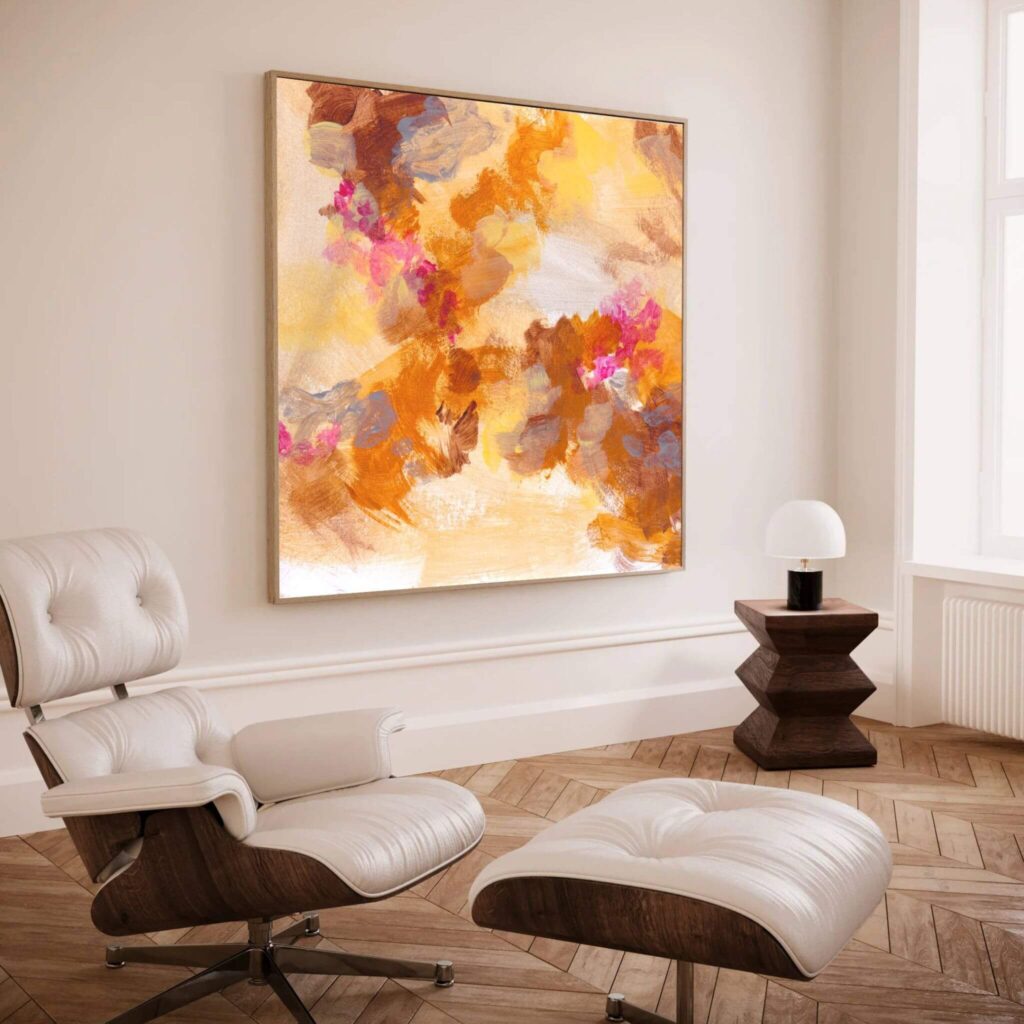
Collector's Vault
Canvas prints from the archive, made with emotional resonance and sustainable materials for spaces seeking depth.
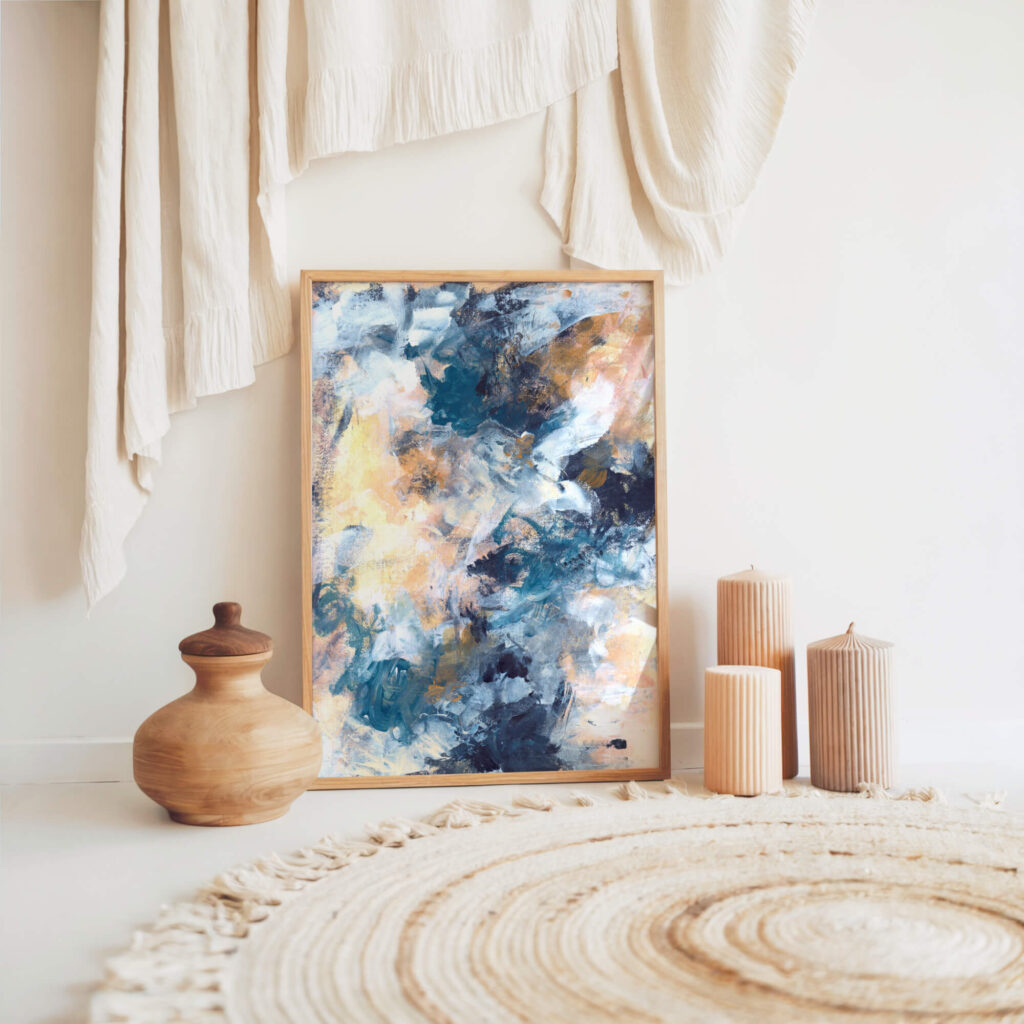
Capsule Commission
Created privately, one at a time, through stillness and reflection. Limited spaces each season to preserve depth and intimacy.
The Last 10
Ultra-limited, hand-embellished editions. No more than ten will ever exist. Made to ground, steady, and hold presence at the highest tier.
How Prints Support Artists’ Creative Sustainability
For all the progress that’s been made, prints are still carrying baggage from decades of being treated as second-class. The same tired misconceptions come up again and again, and it’s time to retire them. The first is the idea that prints are just decoration. They’re not. A decorative poster fills a gap on a wall; a collector-grade print changes the atmosphere of a space. Anyone who’s lived with one knows the difference immediately.
Another misconception is that prints are everywhere, as if they’re churned out by the thousands and lose their value because of it. The reality is the opposite. High-end prints are tightly controlled. Edition sizes are kept small. Once they’re gone, they’re gone. In practice, serious prints can actually be rarer in circulation than some originals, which are often flipped at auctions multiple times over their lifetime.
The third myth is that prints don’t hold value. History disagrees. Limited editions from respected artists have a long track record of appreciating, sometimes significantly. Even within my own practice, I’ve seen how controlled releases like Legacy Thread take on weight precisely because of their scarcity and integrity. Serious collectors understand that value isn’t just about whether a work is technically one-of-one. It’s about presence, demand, and how well the piece has been handled in terms of editioning.
These misconceptions survive mostly because they’re convenient for the old gallery model, which thrives on pushing originals as the only “real” choice. But the market is moving past that narrative, and so are collectors. The ones still clinging to these myths are missing the point, and, more importantly, missing out on building collections that actually make sense in the present.
Misconceptions That Need to Die Off
Prints still get lumbered with myths that should have been buried decades ago. The first is that they’re “just decoration.” That might be true if you’re talking about something rolled out of a poster shop, but a collector-grade canvas isn’t filling a gap on a wall; it’s holding the room together. If you’ve ever lived with one, you know the difference.
The second is that prints are “everywhere.” They’re not. Collector-grade editions are tightly controlled. You’ll see more of the same original bounce around auctions for years than you’ll ever see of a properly handled print series. Scarcity isn’t the issue; perception is.
And then there’s the old chestnut that prints don’t hold value. Which would be news to the secondary market, where editions by respected artists routinely climb in price. Controlled runs like Legacy Thread prove the point: when an edition is handled properly, it gains weight. The only people still claiming otherwise are either clinging to the gallery sales script or they’ve never stood in front of a serious print in their life.

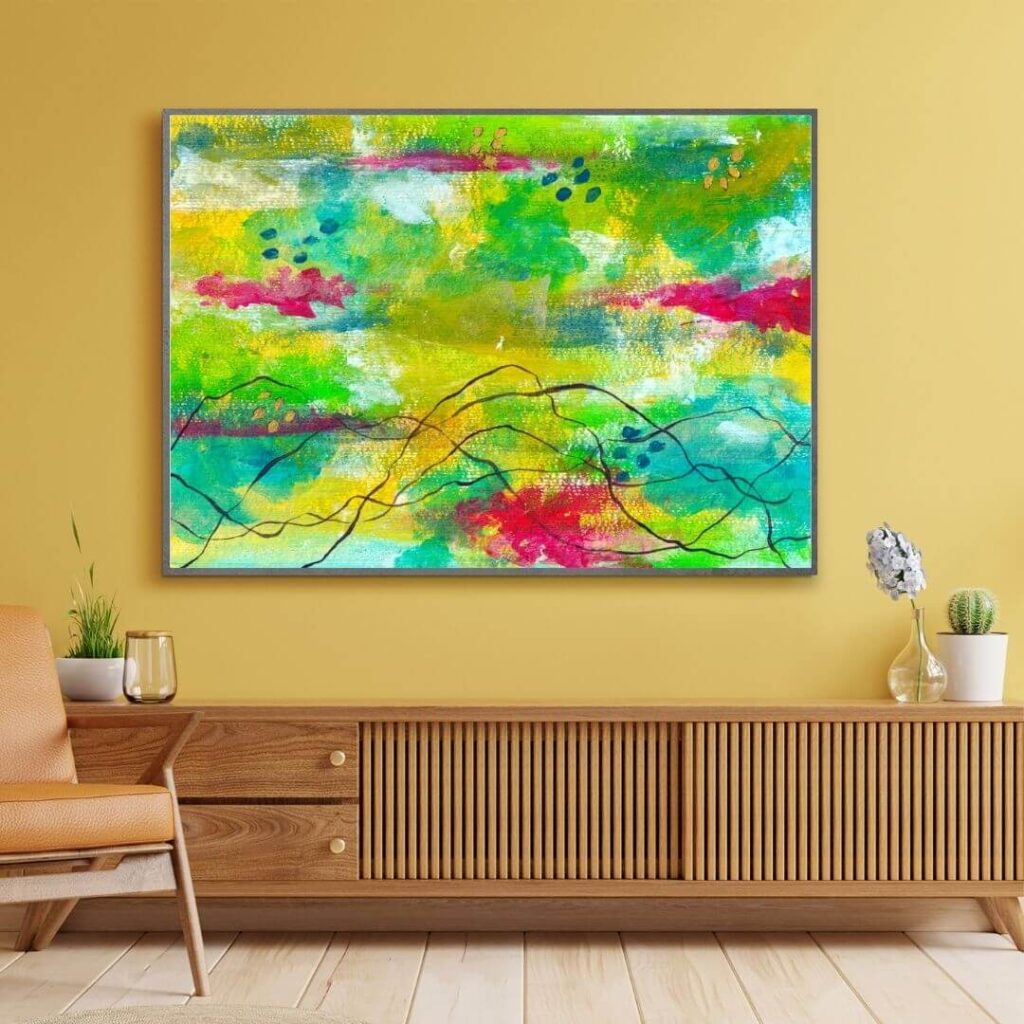
Choosing with Intelligence, Not Ego
A lot of collecting still runs on ego. Buy the one-off, wave it around, make sure people know you could. That isn’t collecting, that’s theatre.
The collectors I take seriously aren’t interested in putting on a show. They buy quietly, for themselves. They want art that makes sense in their lives, that shifts their space when they walk into it. They’re not chasing dinner-party bragging rights; they’re chasing resonance.
Prints fall straight into that category. They’re chosen not because they’re a cheaper option, but because they’re the right option. They give collectors presence without the fragile one-of-one headache, and they align with the values of privacy and sustainability. In other words, they’re a decision made with clarity rather than performance.
The ego wants exclusivity. Intelligence wants presence. The people who understand that are the ones building collections worth talking about in fifty years, not the ones who spent millions to lock something in a storage unit.
Why Collectors Value Presence Over Exclusivity
The old rulebook said exclusivity was everything. Own the only one, and you’ve “won.” But exclusivity doesn’t make a piece hold stillness in a room. It just makes you the only person who paid far too much to hide it in storage.
Presence is different. Presence is when a work actually alters the atmosphere. When it makes you pause mid-sentence or changes how a space feels just by existing in it. That’s the part collectors actually live with, and it doesn’t vanish just because there are a handful of editions.
Exclusivity is really just performance. It’s about proving to other people what you’ve got. Presence is private. It’s about what the piece gives you when no one else is looking. And between the two, most collectors I know would rather feel something every day than brag once at a dinner party.
Prints fit perfectly here because they let you focus on presence without the fragile one-of-one anxiety. You can scale them properly, place them in the spaces you actually use, and stop worrying about whether someone else also owns one. Because let’s be honest, the only people who care about exclusivity are the ones who need something to talk about when the wine runs out.
Why Collectors Value Presence Over Exclusivity
The old debate between originals and prints is getting a bit tired. Originals will always have their place, but treating prints as a lesser cousin is outdated. Collector-grade prints aren’t knock-offs. They’re serious works that carry presence, scale, and depth — without the drama of locking them in a vault and pretending you’ll enjoy them “one day.”
High-end collectors are choosing prints not because they’re cheaper, but because they’re smarter. They fit the way people actually live now: private, intentional, less interested in performance, more interested in resonance. A print can be as powerful in a room as any original, and often more useful because you don’t have to hover around it like a museum guard.
At the end of the day, collecting isn’t about who can shout the loudest at auction. It’s about what you can live with, what actually changes how you feel when you walk into a room. And if you’re serious about that, prints aren’t second best, they’re the intelligent choice.
The Collector’s Vault exists for exactly this reason. It isn’t a shopfront. It’s a private catalogue of serious works, available to collectors who understand that value isn’t defined by hype. If that resonates with you, it’s there waiting, quietly, without fanfare.
